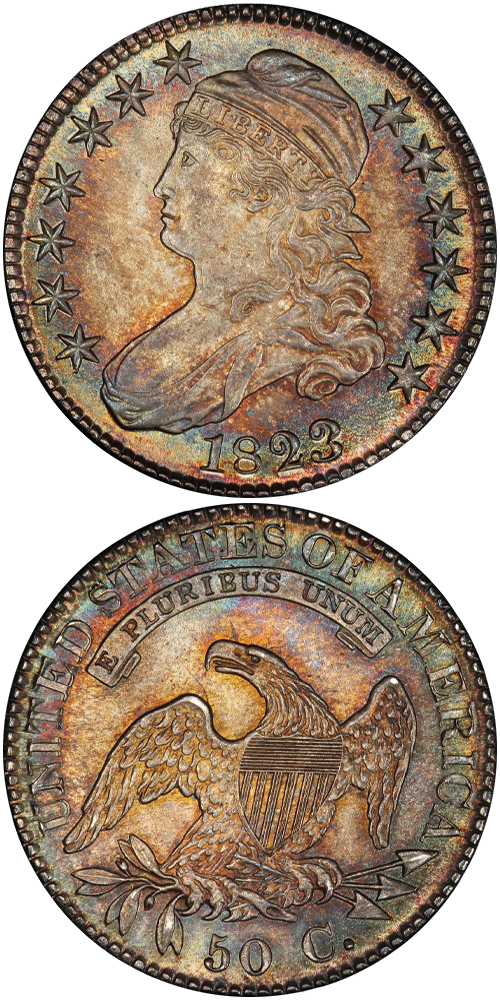1823 Capped Bust Half Dollar
Broken 3
Die states among Capped Bust half dollars tend to be of interest to only the most specialized collectors, but the 1823 Broken 3 stands apart, avidly pursued by all who seek out the major varieties that are identified in the Guide Book of United States Coins. The Broken 3 is seen exclusively on coins struck from the early die state of Overton-101. While this die combination was still fairly young, the Broken 3 was repaired in the die, creating the Patched 3. Numeral punches were raised from punch matrixes in much the same way that a die is made from a hub. The Broken 3 punch was poorly manufactured, but the punch matrix from which it was created apparently produced other punches that show a more refined and intact 3. Edgar Souders, in Bust Half Fever, reported that overlay study of the Broken 3 punch revealed, “only four varieties, of the thirteen known, did not match,” suggesting that the original matrix was not broken but the punch that was used on this die was.
Souders’ research shows the great strides that have been made in the study of Capped Bust half dollar die varieties in the last 50 years: in 1964, Al Overton described this variety as an overdate, suggesting that the “lower half of a 2 was removed and [the] lower half of [a] 3 cut in its place.”
While pieces coined from the Broken 3 state are not notably rare, they are considered scarce in all grades, seen less often than the later coins of this marriage with the Patched 3. In Mint State, 1823 Broken 3 half dollars are justifiably considered rarities.
The example to the left was sold by Stack's Bowers Galleries in the D. Brent Pogue Part III Auction, where it realized $64,625.






